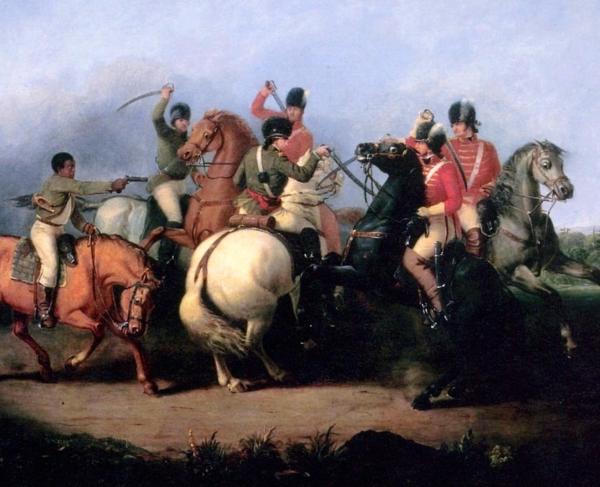
Moores Creek National Battlefield, Currie, N.C.
Many of the American Revolution’s early battles were thoroughly British victories, as the Patriots who founded our country found near-constant defeat during the first year of the war. Yet while the minutemen’s loss on Lexington Green and General Joseph Warren’s death at Bunker Hill are common subjects in U.S. history books, the Battle of Moores Creek Bridge — one of the Patriots’ first outright victories in the war — is all but forgotten in the realm of popular knowledge. This is especially surprising given that it also counts as history’s last broadsword charge by Scottish-Highlanders. The battle revealed the Revolution to be a complex affair, as North American–born Patriots and Loyalists clashed, pitting countrymen against countrymen. The memory of this legendary conflict is preserved at Moores Creek National Battlefield.
In January 1776, the British royal governor attempted to strike a claim for control of North Carolina. He called for Major General Henry Clinton’s assistance and put out a call for all North Carolinian Loyalists to meet the arriving officer in mid-February. Most of the men who gathered were of Scottish descent and were led by one Brigadier General Donald MacDonald. But the actions of Colonel Richard Caswell and his Patriot militiamen resulted in a three-minute-long battle on February 27, and ensured that MacDonald and his host never rendezvoused with the British general.
Moores Creek exists as it did then, a wide berth of swamp water, with some sections going as deep as 25 feet. The famous bridge the Patriots cleverly entrapped through the means of removing planks and slathering the girders with soft soap and animal fat has been re-created. Similarly, the earthworks where Patriot troops fired upon the few Scottish Loyalists, who chose to let out a Gaelic battle cry “King George and Broadswords!” and unsuccessfully charge the Patriot position, have also been re-created. The only remaining original visual landmark in the park is the Black River Road, where both Patriots and Loyalists walked to reach their initial positions.
This historical site also holds several monuments that connect the battle thematically to modernity. To honor the Americans who died on both sides, the park currently holds monuments for both Patriots and Loyalists. Erected in 1857, the Grady Monument is a tall sandstone obelisk that holds the interred remains of the only Patriot soldier who gave his life that day, Private John Grady. The second monument, simply known as the Loyalist Monument, was placed in the park in 1909 to honor the fallen Loyalists as Americans rather than enemies, as it notes the Highland-Scots’ bravery, courage and freedom of choice and expression. The park also received another monument in 1907, dedicated to folk-hero Mary Slocumb, a Patriot soldier’s wife who had a premonition that her husband’s life would end at Moores Creek. She rode more than 70 miles to save him, and when she found that he was not there, she assisted in tending to the battle’s wounded Patriots until after her husband returned, unscathed, from chasing the Loyalists in their retreat. The monument stands to represent women’s paramount involvement in the American Revolution.
Moores Creek National Battlefield represents a battle worth remembering; one which, had it not occurred, would have certainly led to a North Carolina unlike what we see today.
Related Battles
2
50

